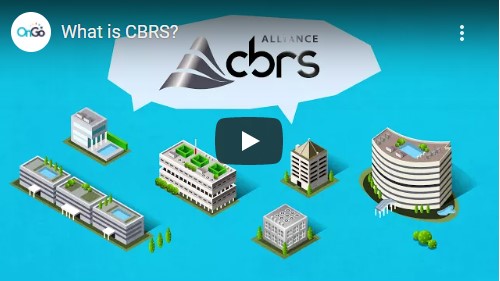CBRS
Citizens Broadband Radio Service
The Future of Spectrum Sharing
In 2015, the FCC approved the use of a 150 MHz wide band of the 3.5 GHz band (3550 MHz to 3700 Mhz, or band 48) for shared public wireless access, called Citizens Broadband Radio Service (CBRS). CBRS is a spectrum initiative to combat the shortage of spectrum available for wireless communication services by reallocating U.S. federal government radar system and satellite frequencies, enabling private LTE broadband for commercial enterprises, and improving coverage and capacity.
Overview
Citizens Broadband Radio Service (CBRS) is enabling a new way to approach radio spectrum sharing with its efficiency, low-cost, rapid access, capacity, and security/reliability. For both small and large indoor or outdoor deployments, CBRS allows operators and enterprises to expand their existing services, or new entrants to go to market with unique and innovative solutions.
As a Priority Access License (PAL) winner, Tecore is aware of the challenges that accompany a CBRS deployment. Tecore CBSD’s are OnGo certified and Part-96 compliant, and our 29 years of experience providing Core-to-Edge support allows customers to leverage Tecore’s All-G patented iCore technology that provides the EPC functionality for a comprehensive CBRS solution.
Whether you are an Enterprise or Operator, CBRS spectrum sharing has broadened the capability of supporting new use cases and applications.
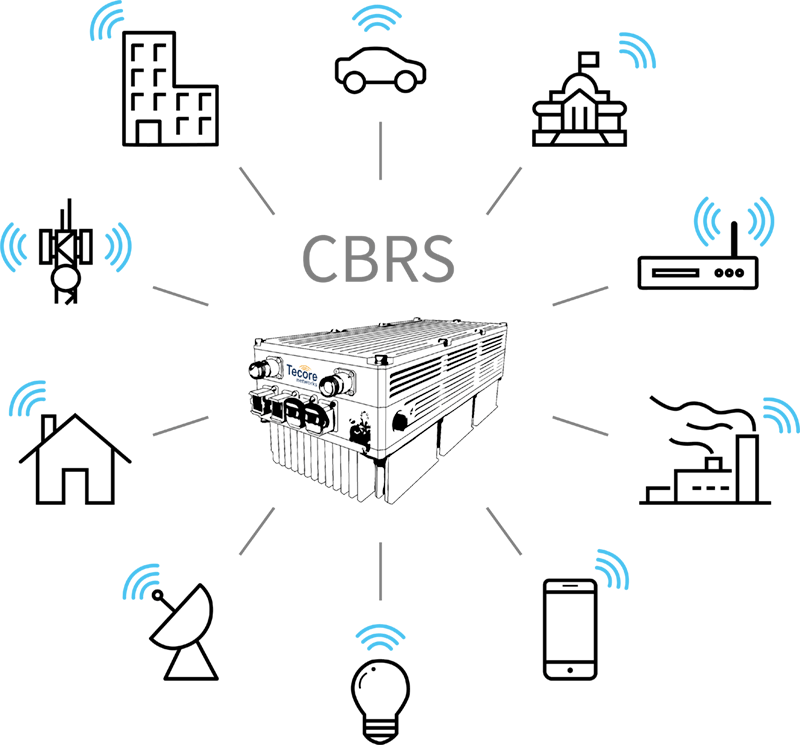
Key Benefits
Cost Effective, Scalable
Operational Ease of Use
Hardware Agnostic and Interoperability with Multiple Vendors
Indoor/Outdoor Installation Flexibility
Single OEM for CBSD and EPC
How Does CBRS Work?
Deploying a network in the CBRS spectrum is similar to deploying a WiFi network. The network operator first purchases a CBSD, or Citizens Broadband Radio Service Device – an eNodeB designed to operate specifically in the CBRS spectrum (LTE band B42 and B43) – with the correct power limits. The operator will register the purchased equipment online and select the provider (Tecore Networks) as the vendor to connect the CBSD to the Spectrum Access System (SAS) in the cloud. The SAS coordinates the spectrum use of UE devices on the network, and when the channel is no longer being used, the channel is cleared for use by other requesting operators.
The unique CBRS network architecture ensures that the spectrum is efficiently allocated, expanding market and business opportunities. And with the support of all major operators, CBRS technology and capabilities will continue to expand and grow as more OEMs enter the market.
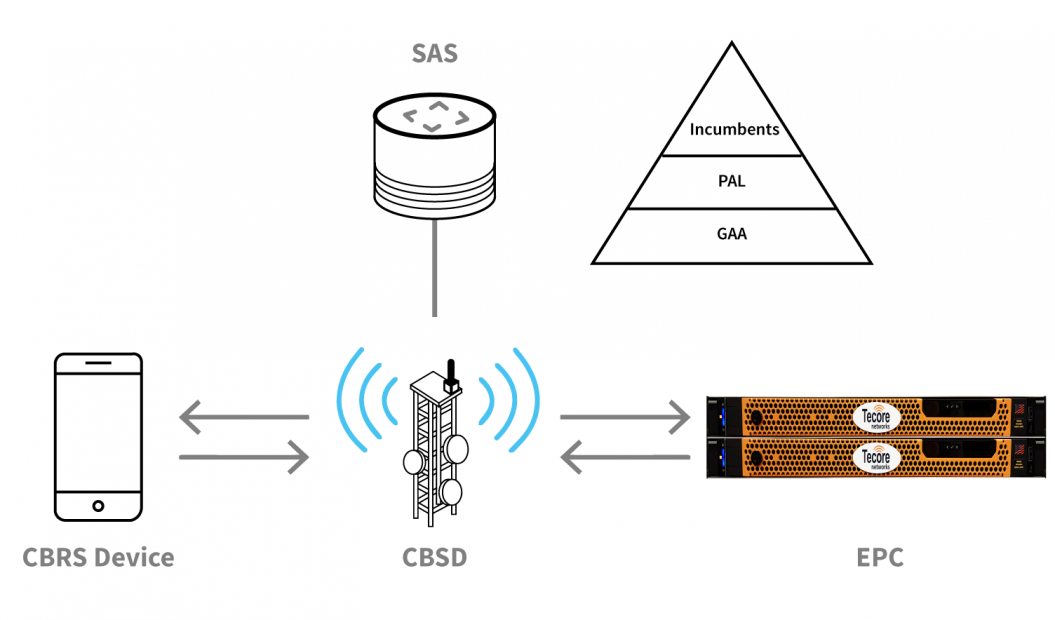
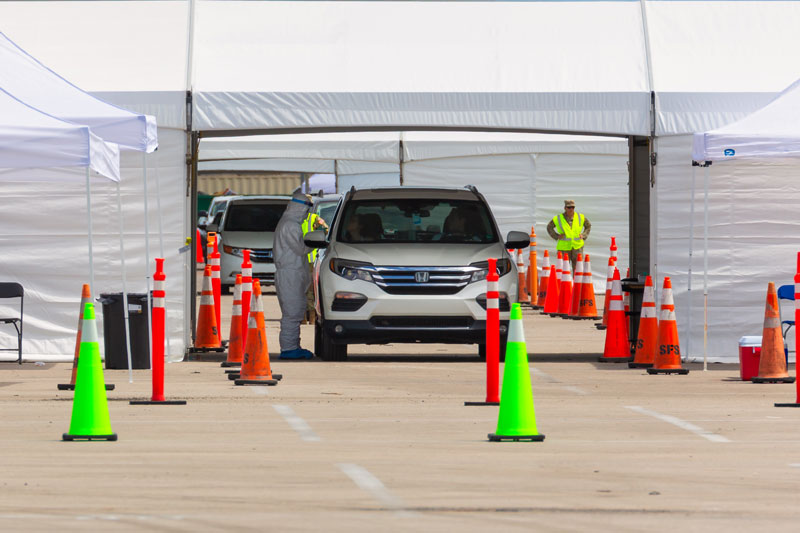
Medical Testing Facilities

Smart Cities

Private Enterprise

Online/Remote Learning
Three-Tier Architecture
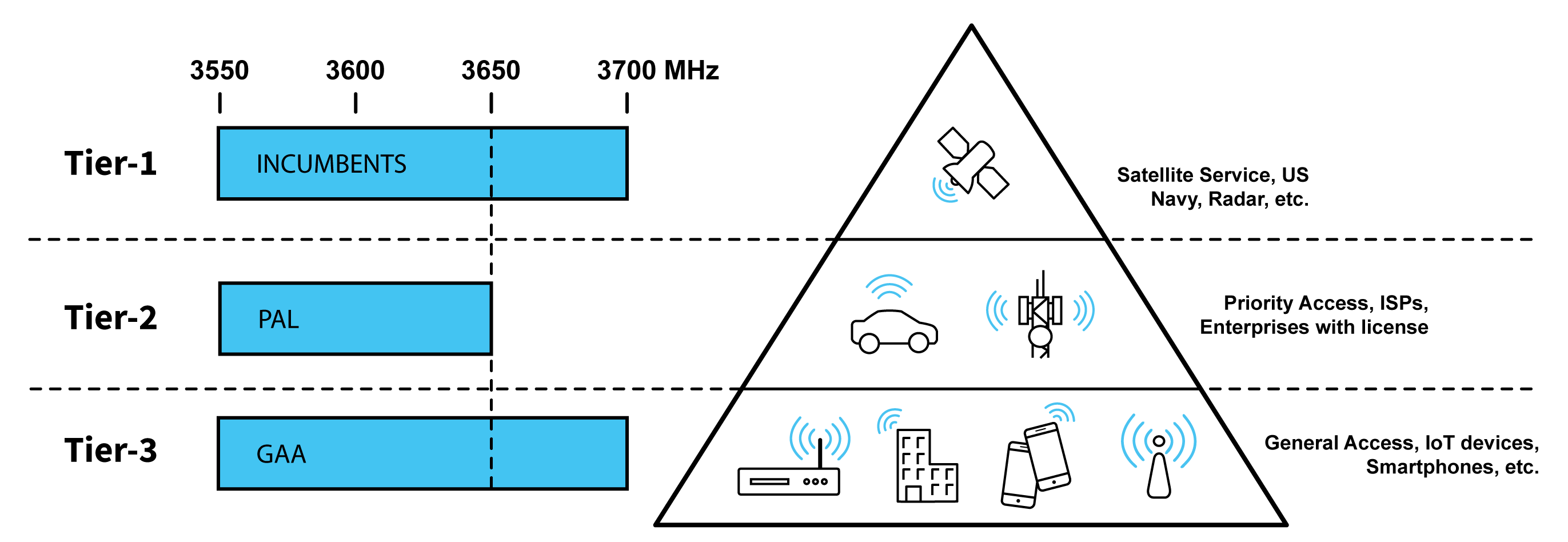
Within the CBRS spectrum is a three-tier architecture: Incumbents, Priority Access Licensees (PAL), and General Authorized Access (GAA) users. The allocation of spectrum to these tiers is handled by the Spectrum Access System (SAS), a highly advanced automated radio spectrum coordinator. The tiers are as follows:
Incumbent Access Users – The top tier – Incumbents – include federal users, grandfathered Fixed Satellite Service earth stations, and Grandfathered Wireless Broadband Licensees in the 3550-3700 MHz portion of the band. These users will always have priority and site-specific protection. Incumbent users will be guarded from interference from the bottom two tiers.
Priority Access Licensees (PAL) – The PAL tiers will be assigned using competitive bidding. PALs use the 3550-3650 MHz portion of the band. PALs are renewable for a 10 MHz channel within a county for ten years. 7 total PALs may be assigned to a county with a maximum of four PALs given to any single applicant
General Authorized Access (GAA) Users – The GAA tier allows flexible and open access to the band for the largest group of prospective users. GAA tier users are allowed to use any fraction of the 3.5 GHz band that has not been assigned to the PAL tier or Incumbent tier.
Resources
CBRS Alliance: What is CBRS?
Learn about CBRS technology, utilizing shared spectrum, enabling in-building and outdoor coverage among other use cases.
How to Deploy a Private LTE Network
Learn about the planning, design, and installation that goes into deploying a private network in the CBRS spectrum.
CBRS Alliance Members List
Explore the ecosystem of OnGo Partners and the various services they support. Search for Tecore to find out what we offer.

